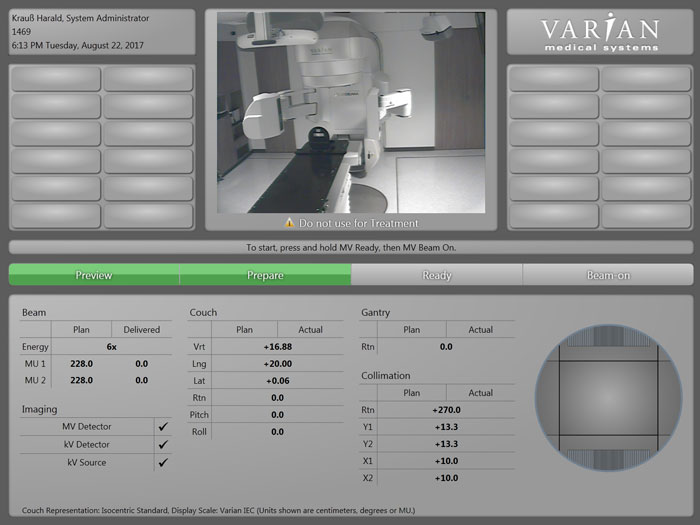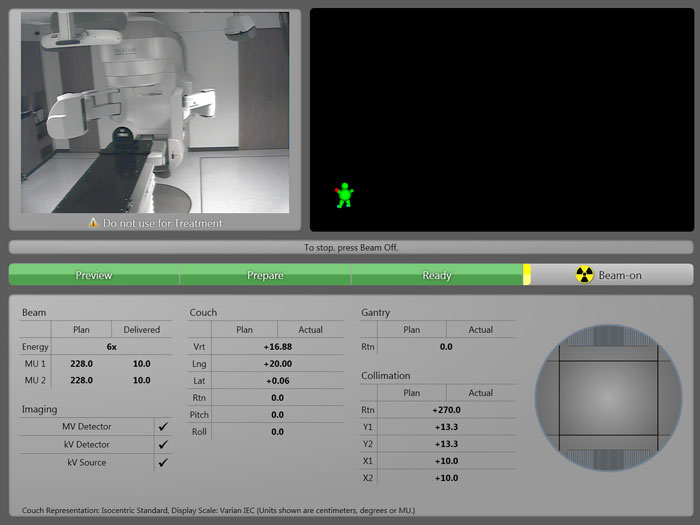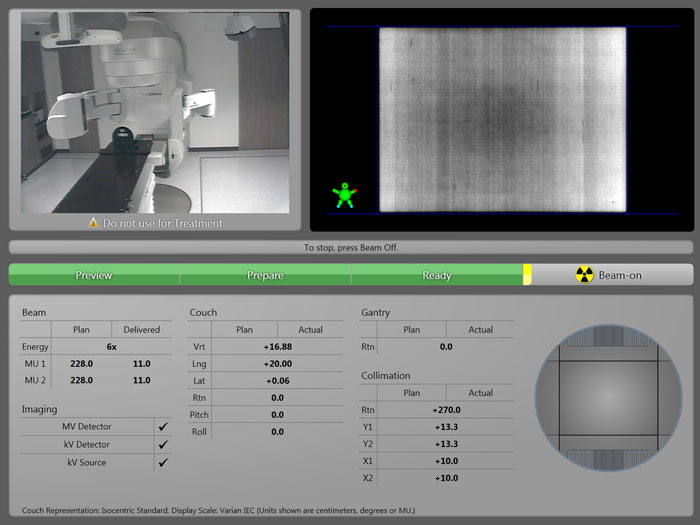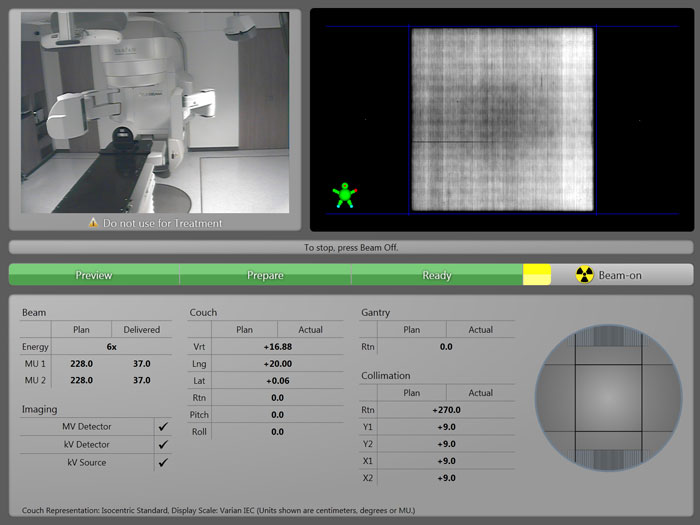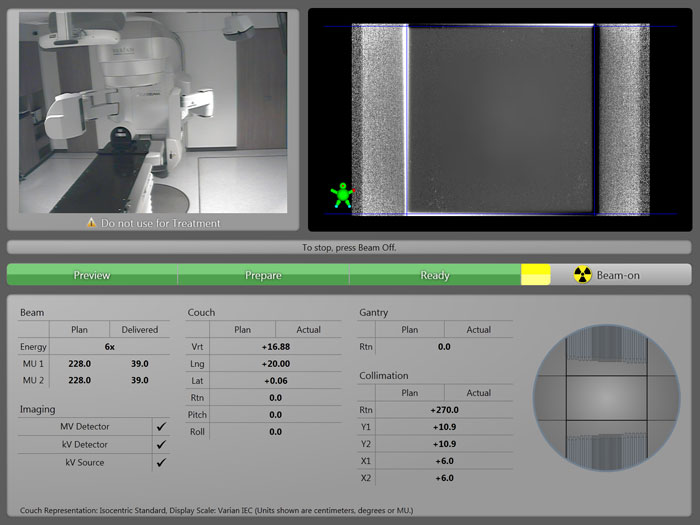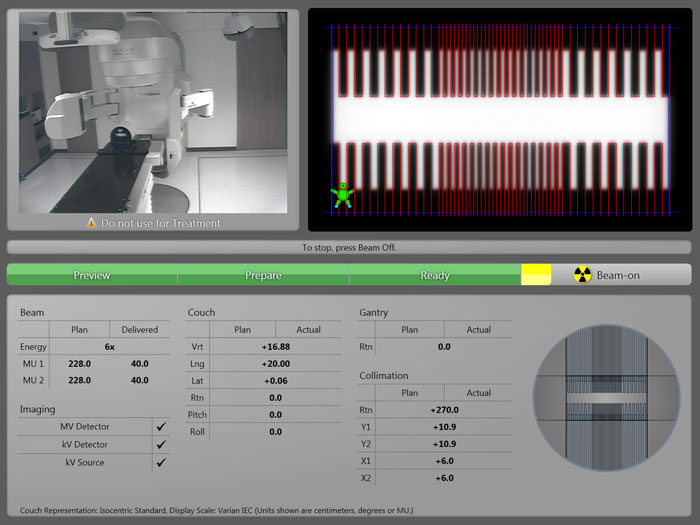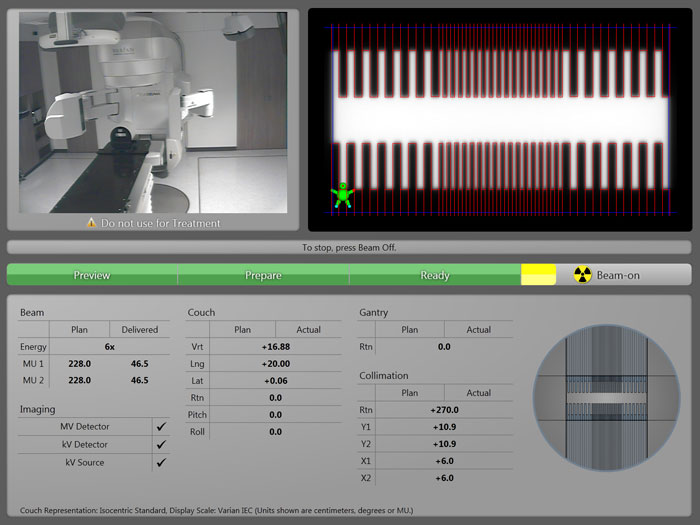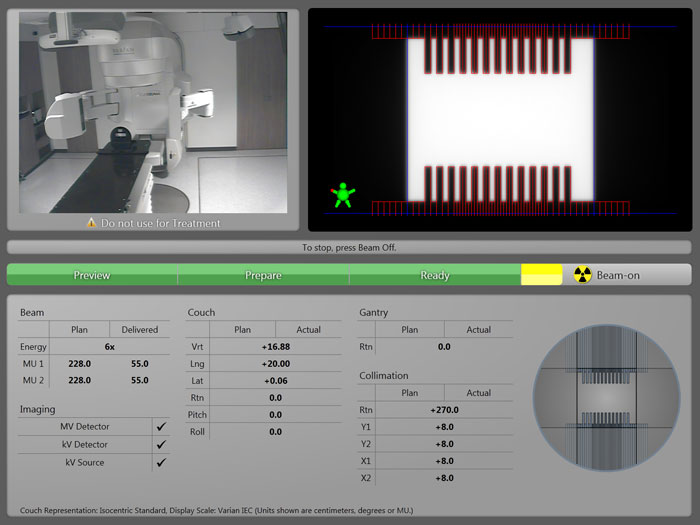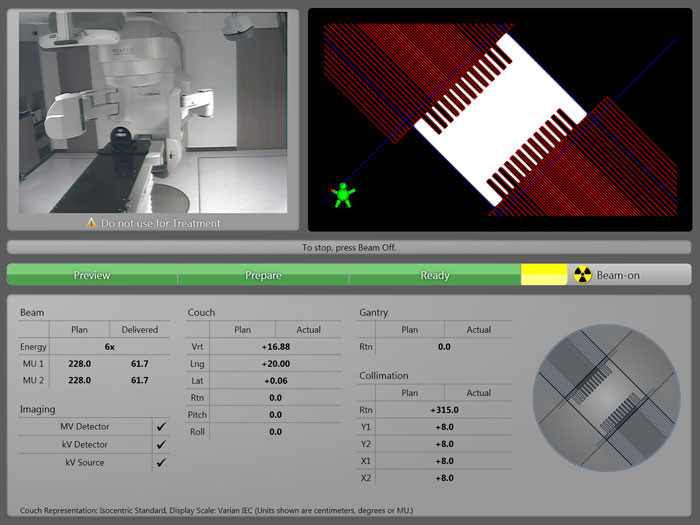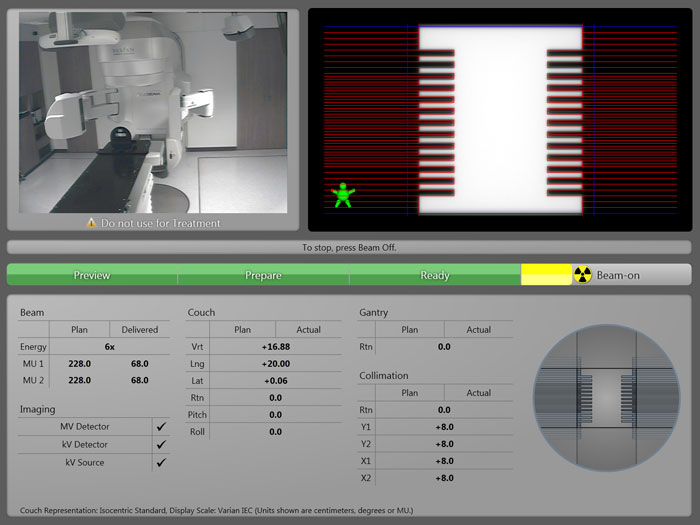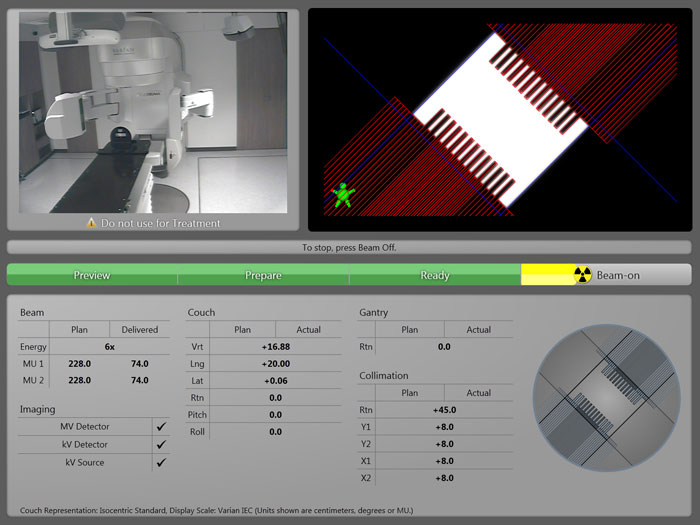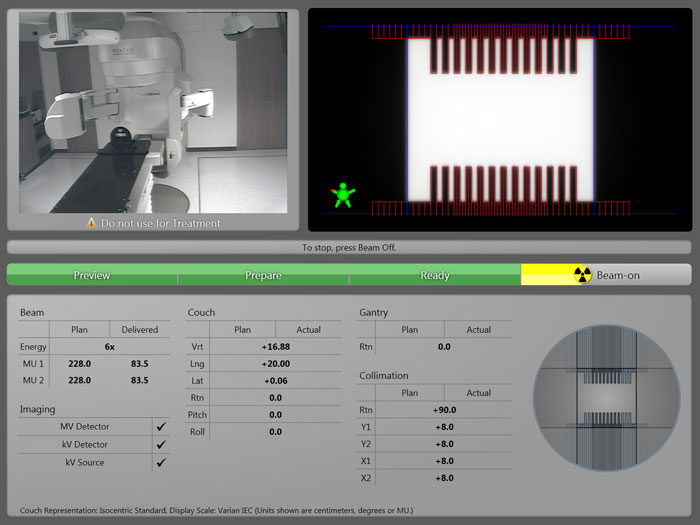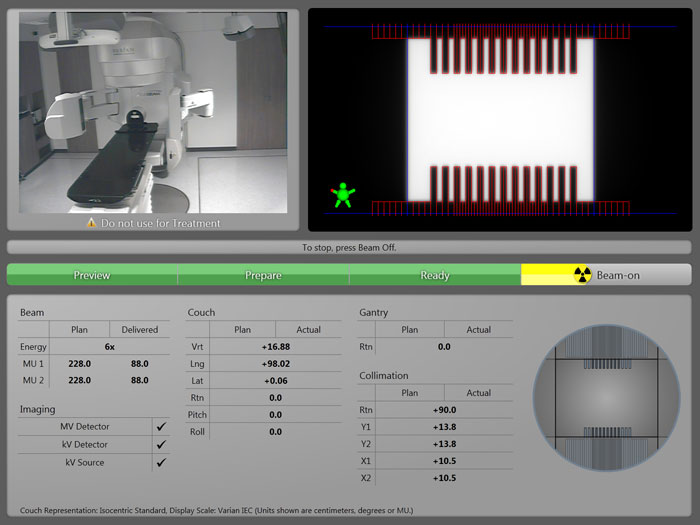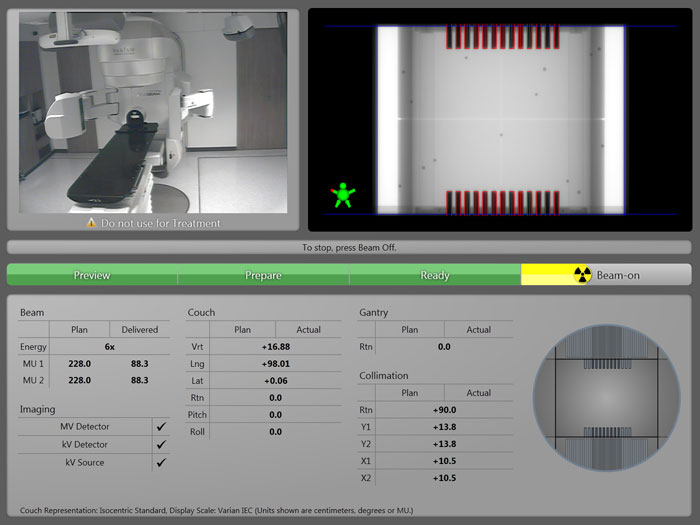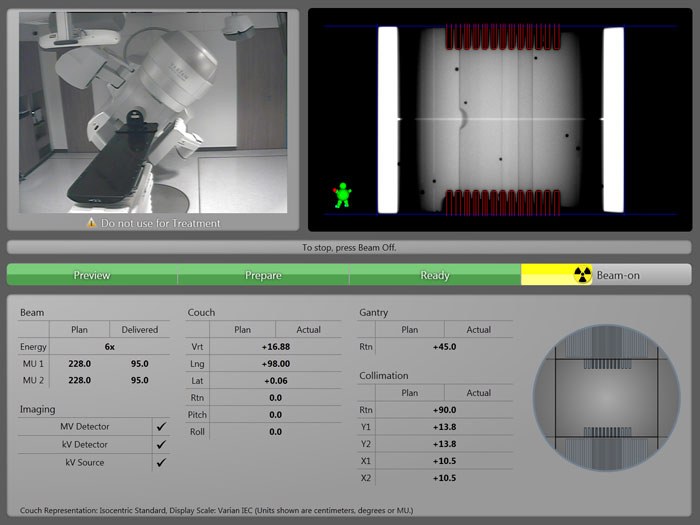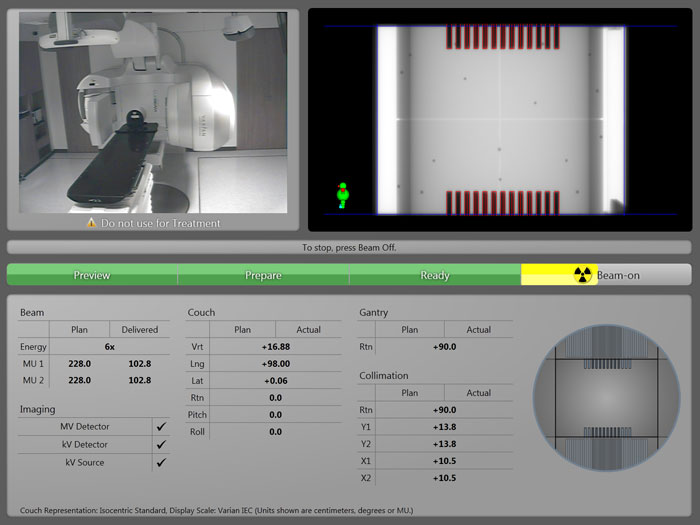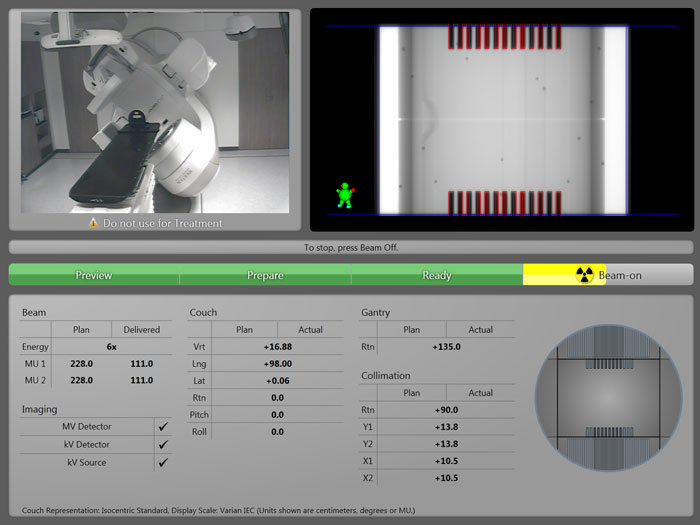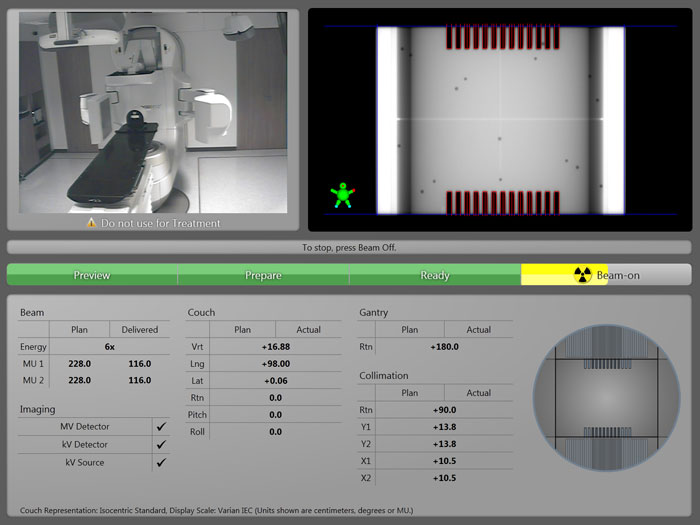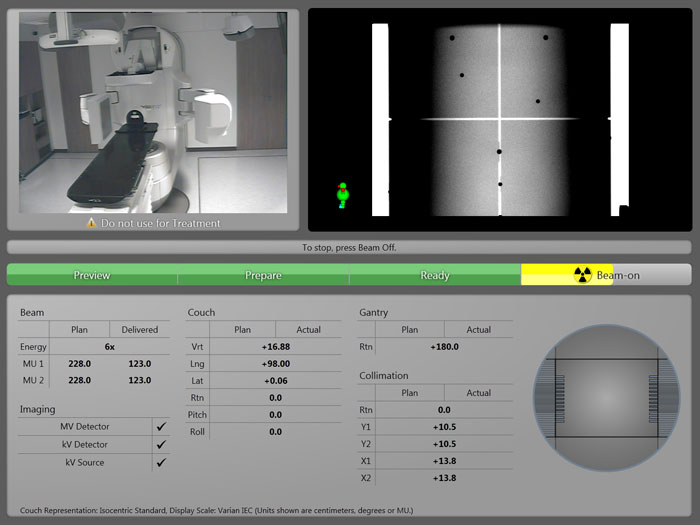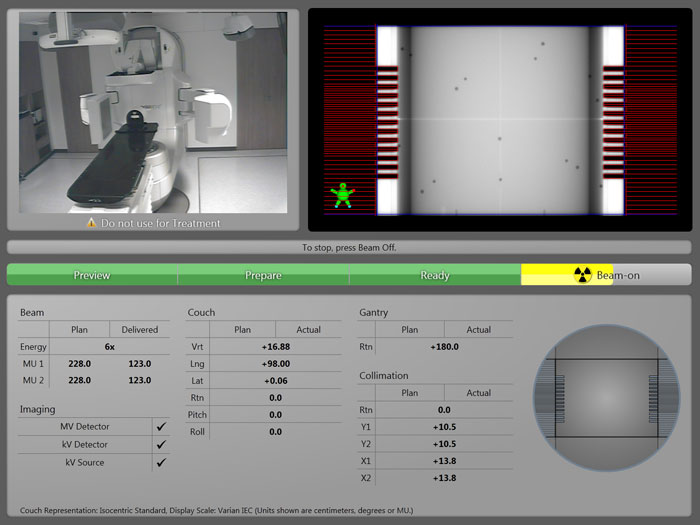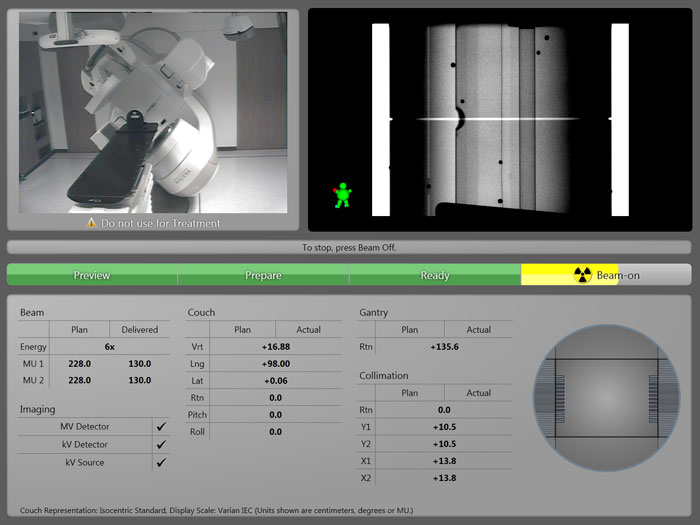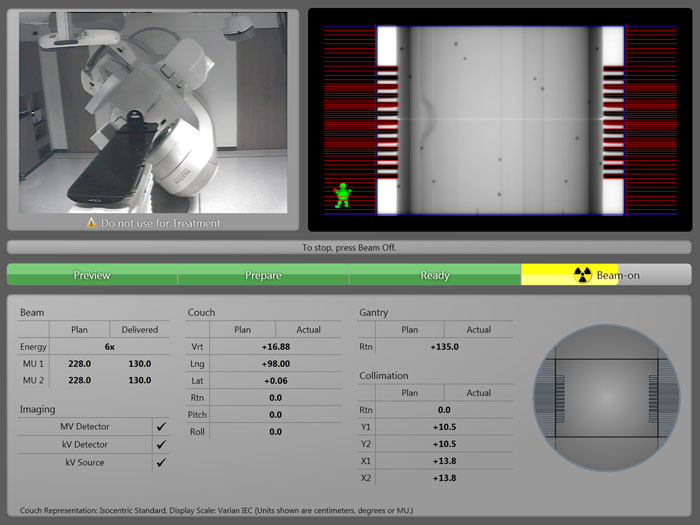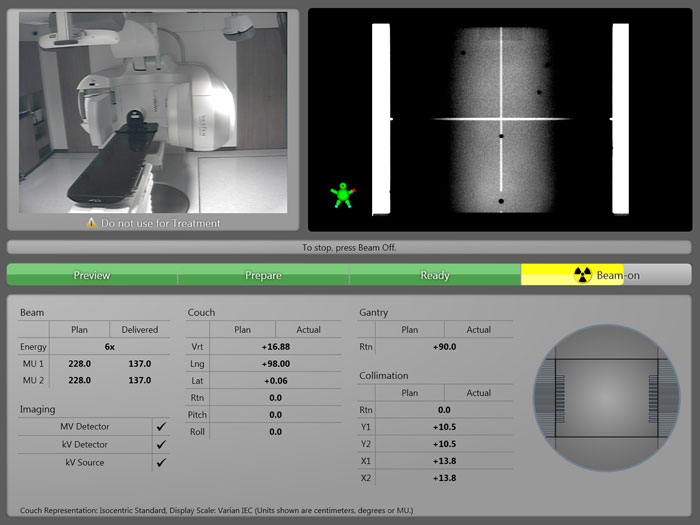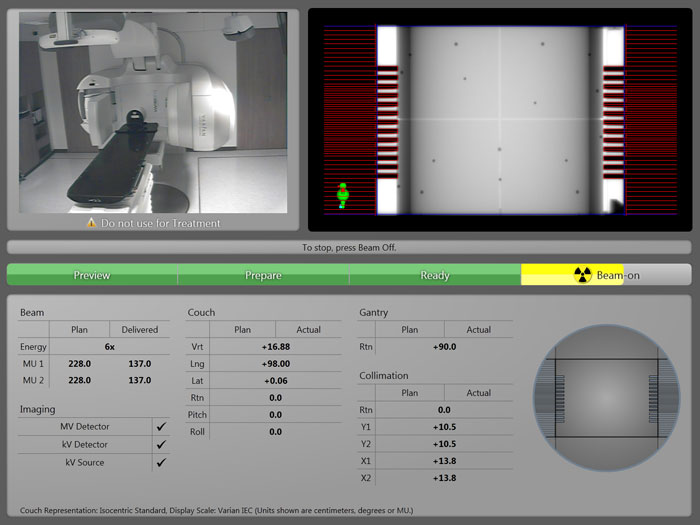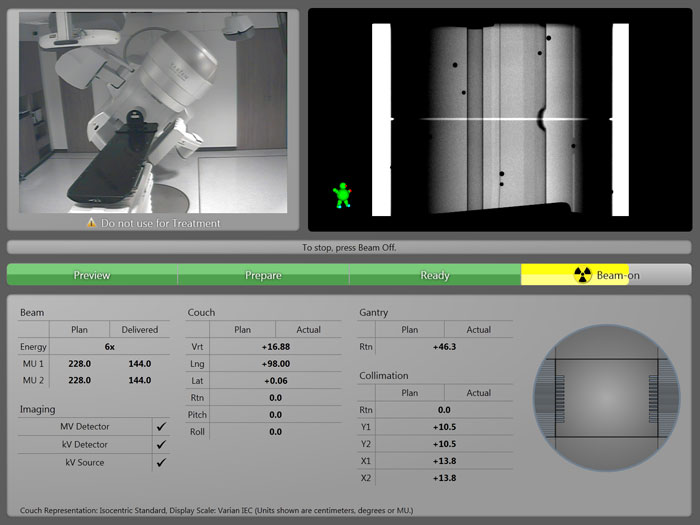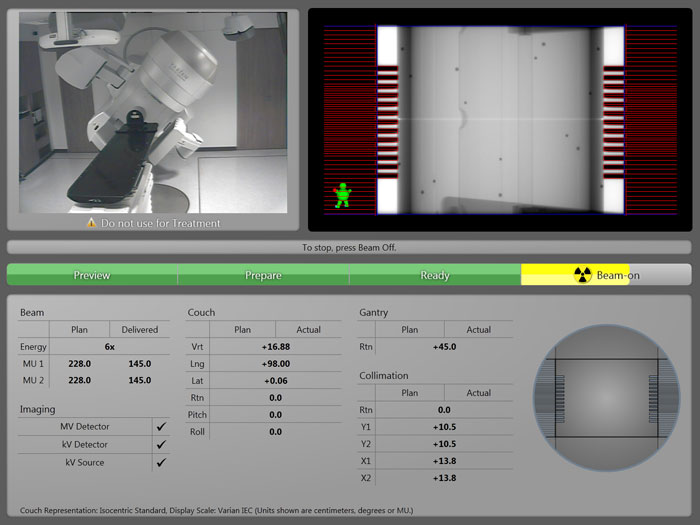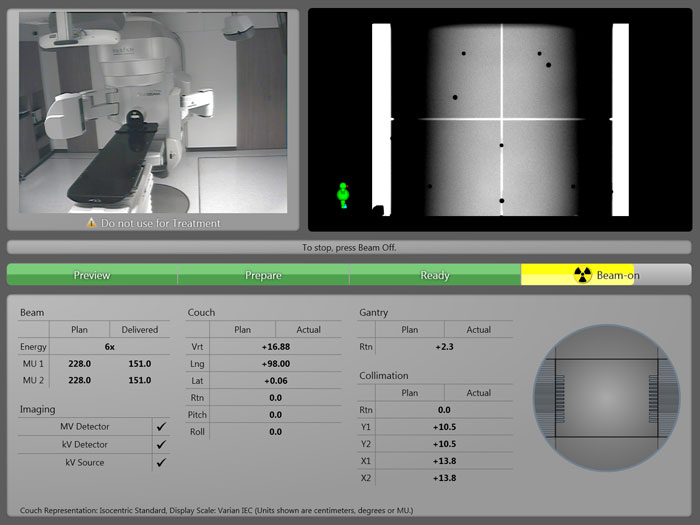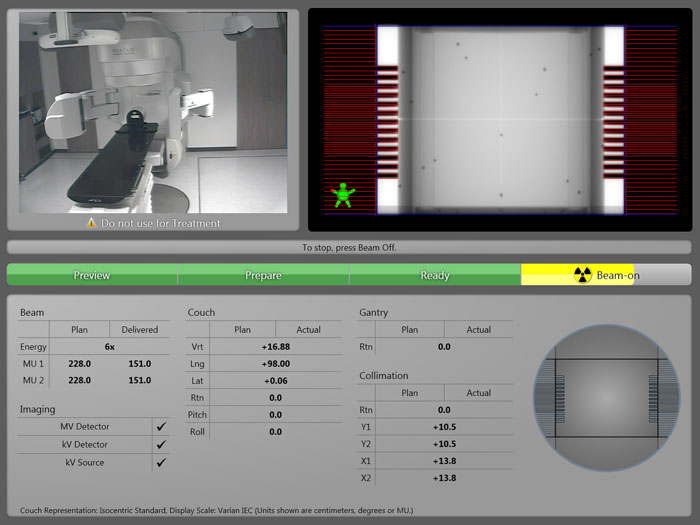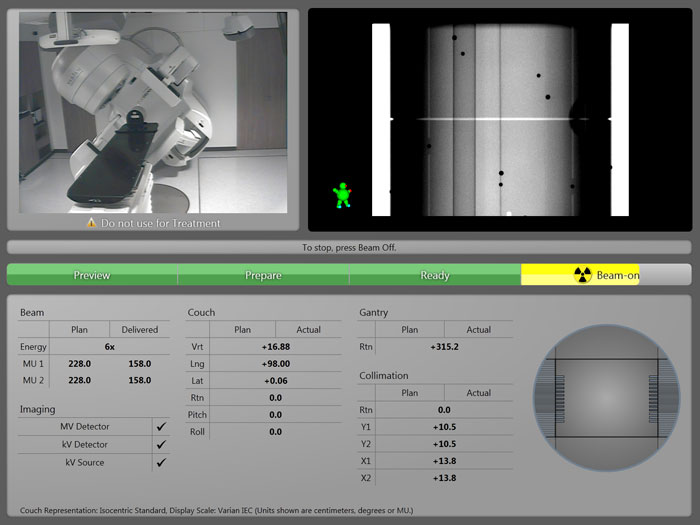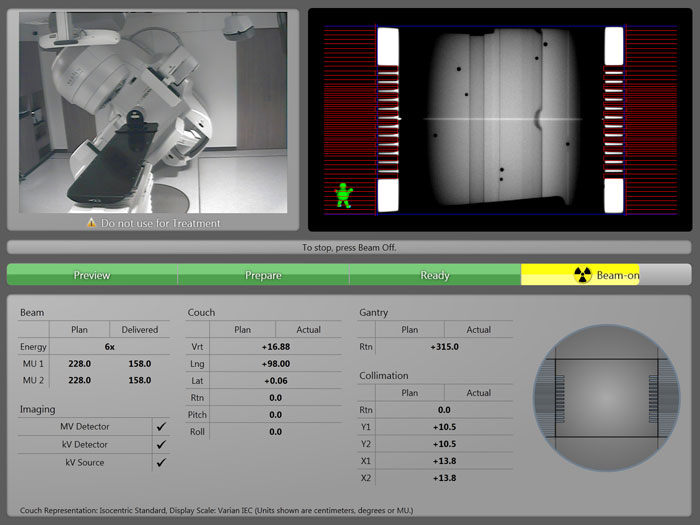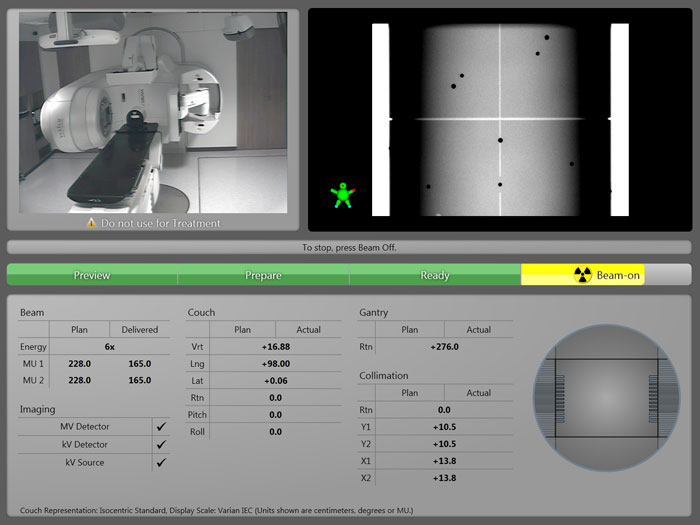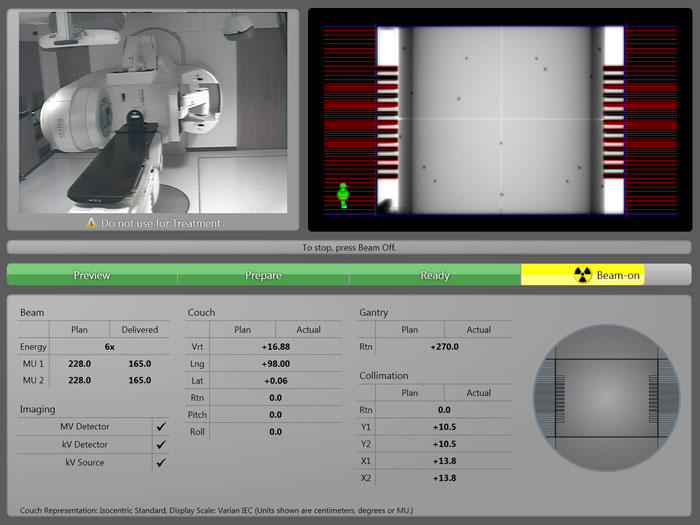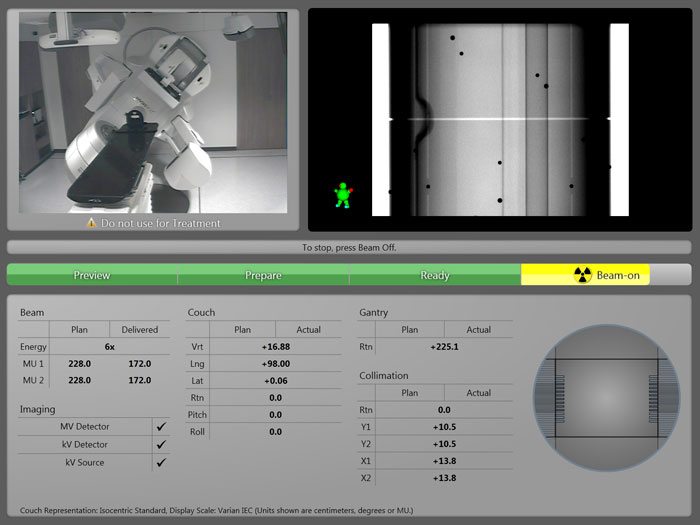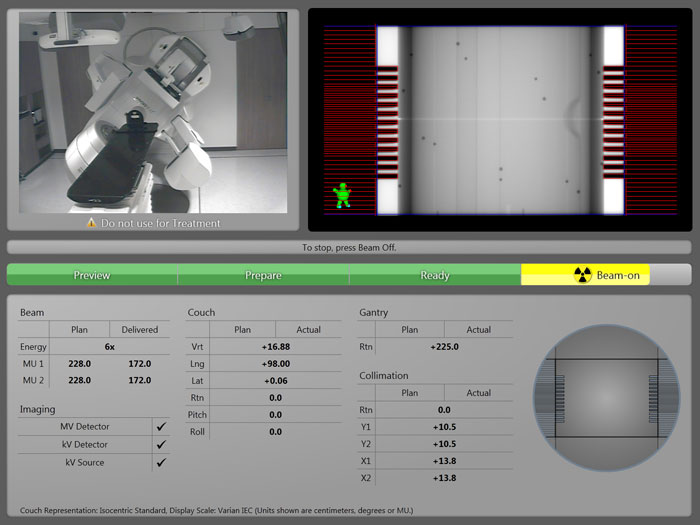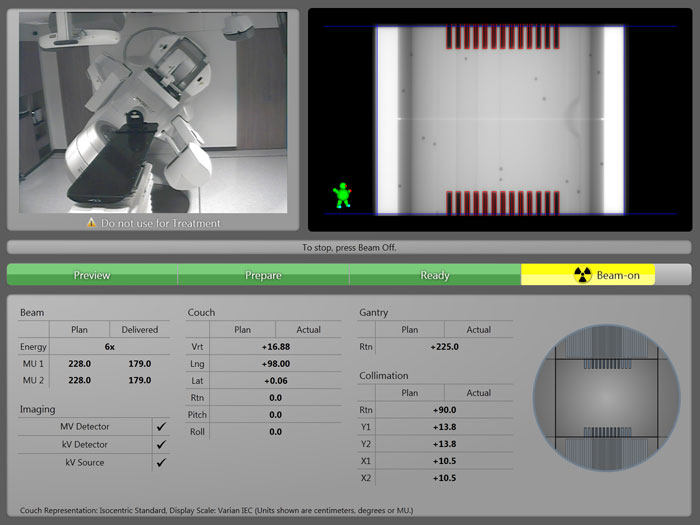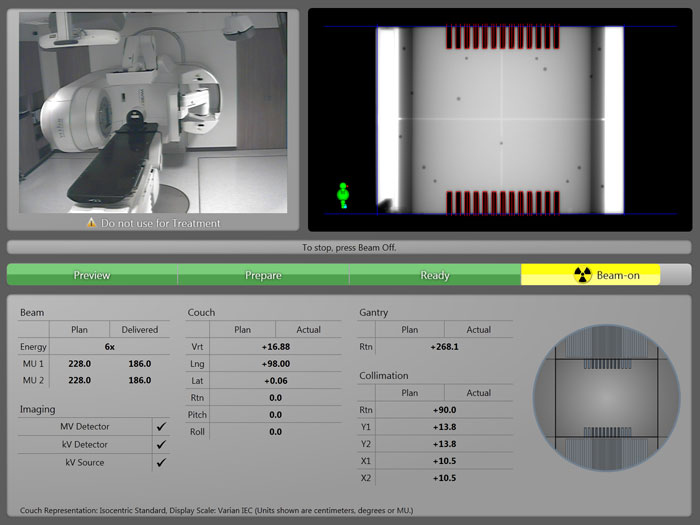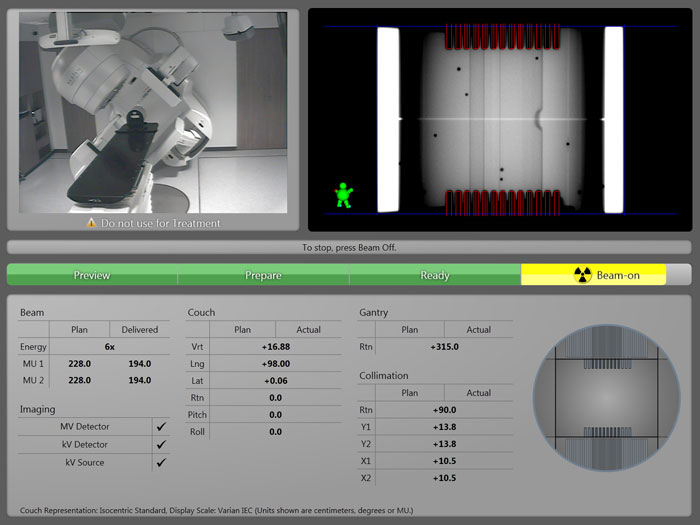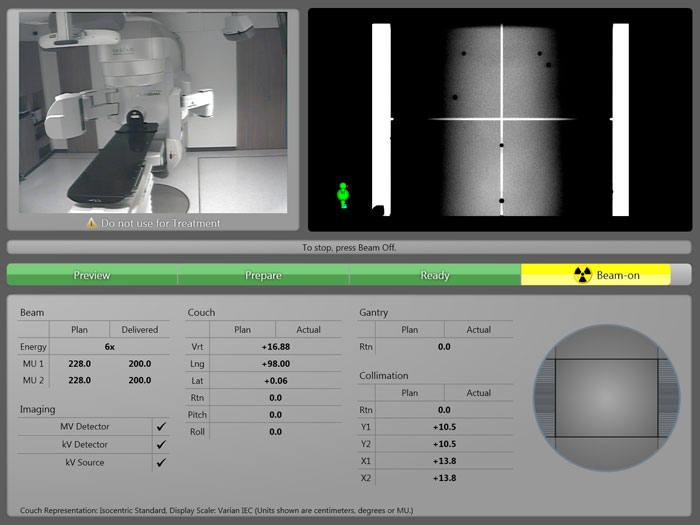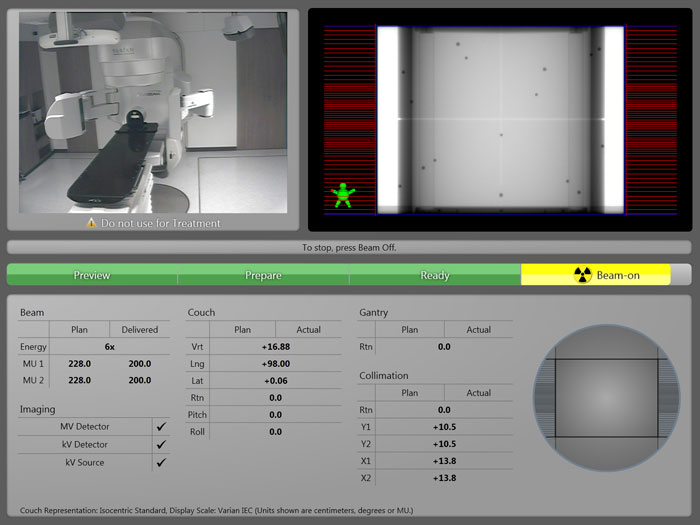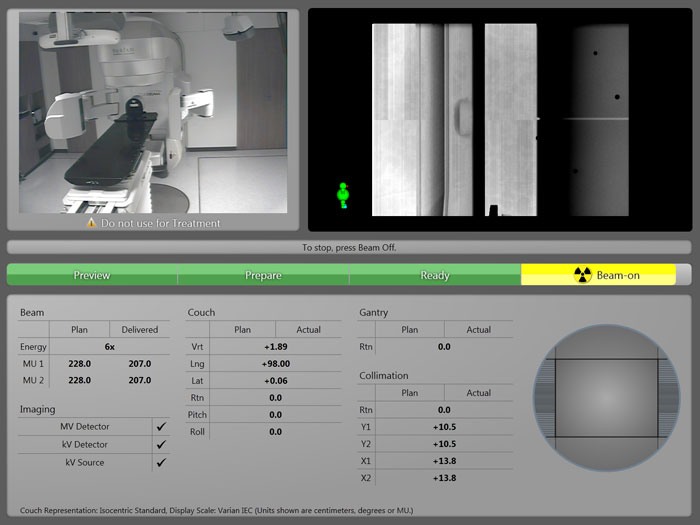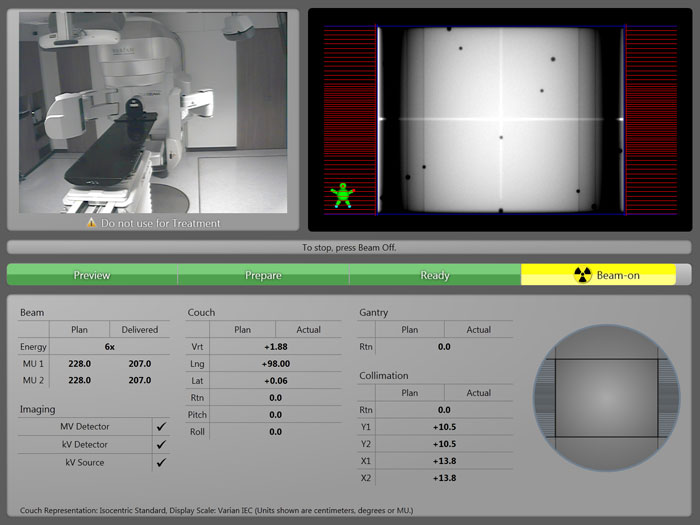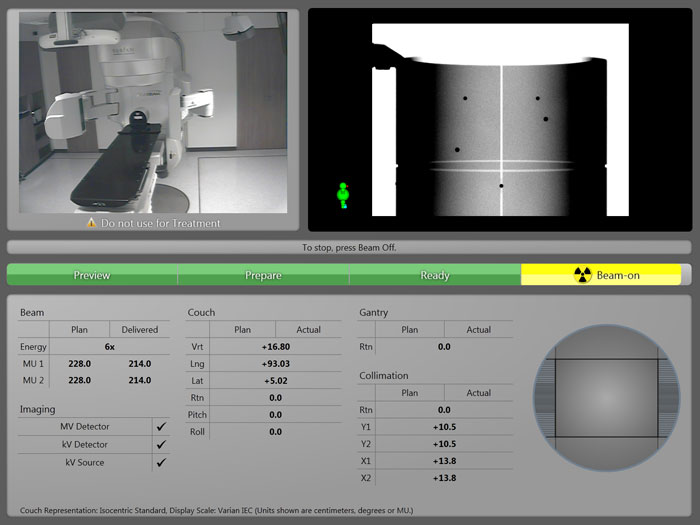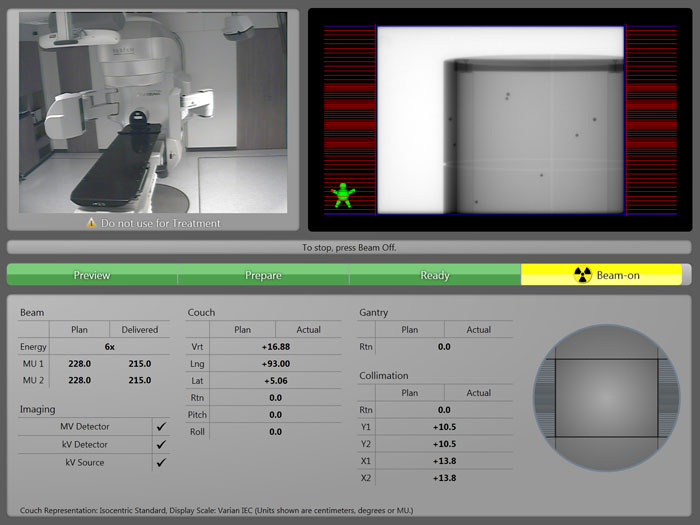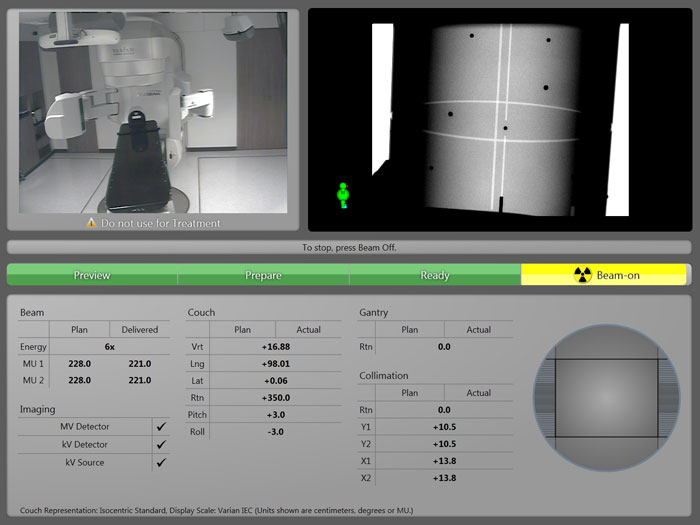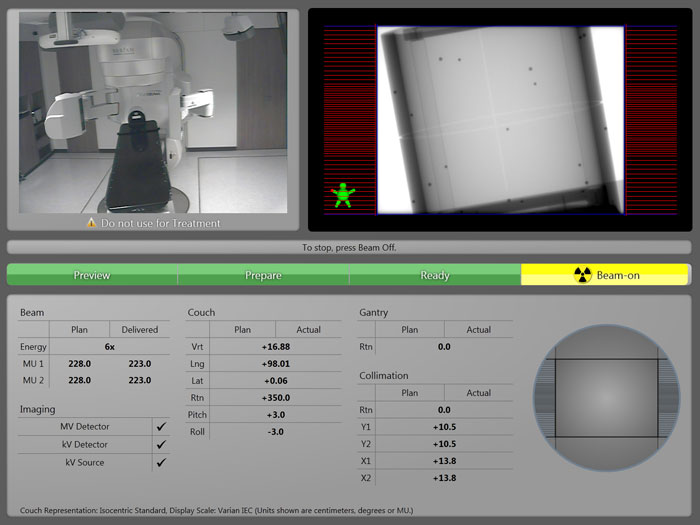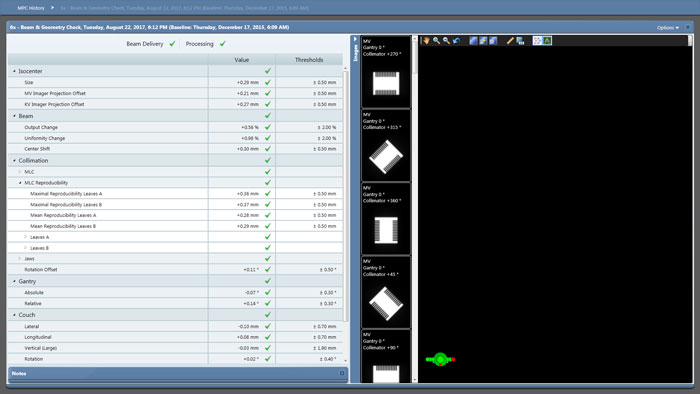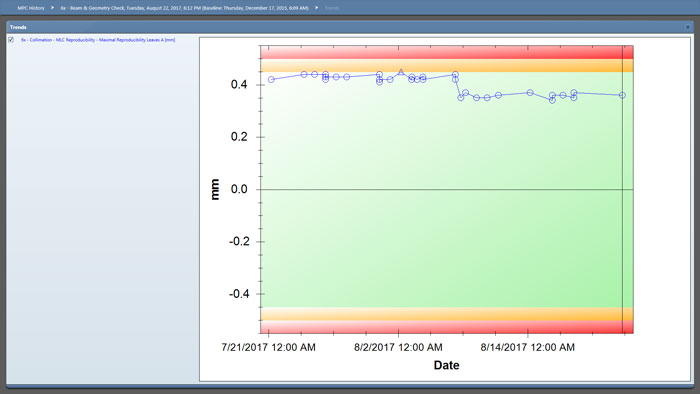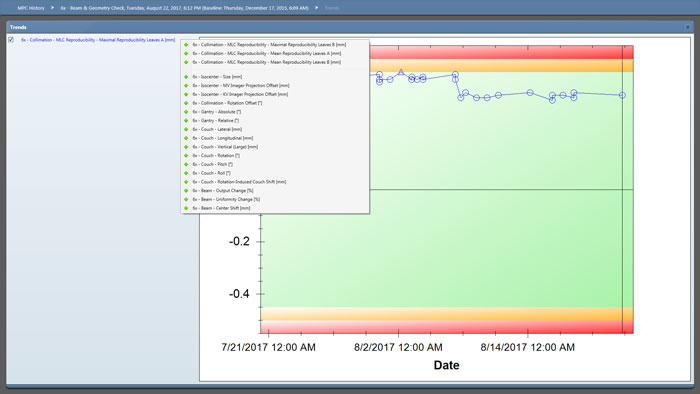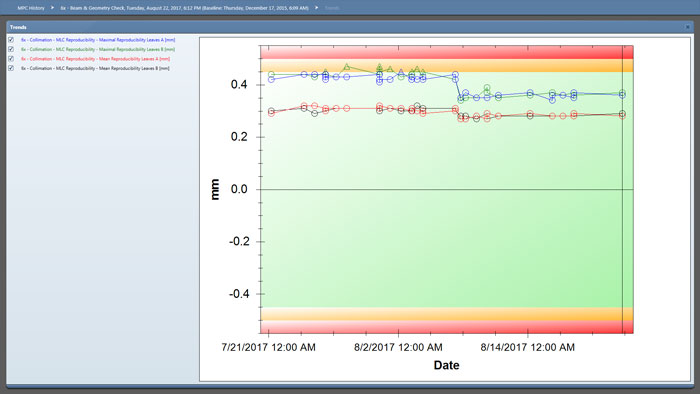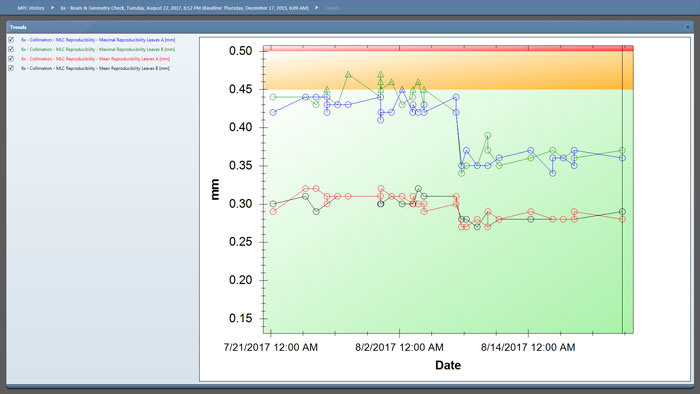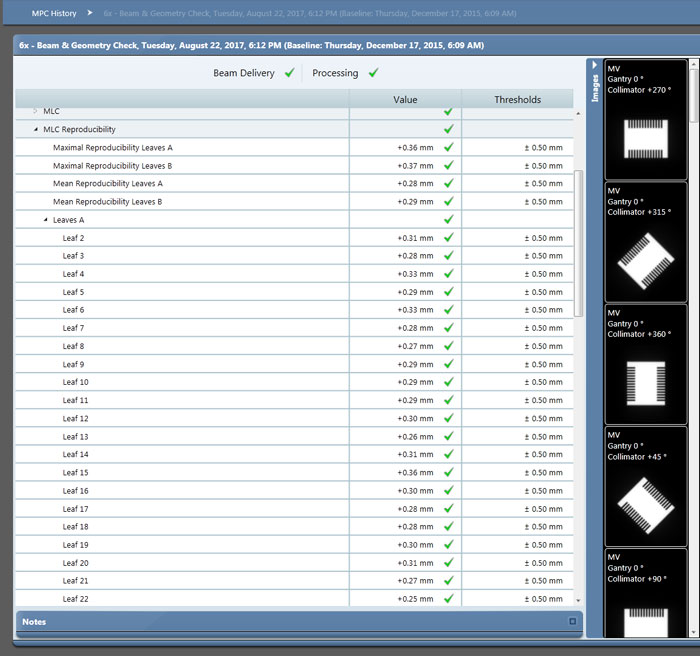Measuring MLC Backlash with MPC 2.7
TrueBeam 2.7 comes with a new version of Machine Performance Check (MPC). Varian now assigns the same number to TrueBeam version and MPC version, which perfectly makes sense1.
The MLC Reproducibility Test in MPC
MPC 2.7 introduces a useful new test: the measurement of MLC backlash based on acquired MV images. The relevant images appear in the sequence of screenshots below, at 40.0 and 46.5 MU delivered. The two MV images display the same MLC pattern, but when you compare the images closely, you can see that the first (at 40.0 MU) has a little less leaf opening than the second. This is due to the different direction of leaf movement, which reveals the mechanical play in the 120 individual leaf drives2 of our HD120 MLC.
Results are given in the "Collimation" section, under the new title "MLC Reproducibility". Details are displayed as:
- Maximal Reproducibility Leaves A and B
- Mean Reproducibility Leaves A and B
- All individual results for A-leaves and B-leaves
For the overall MPC result, the "Maximal ..." values are certainly the most interesting, since if any of the leaves has a reproducibility above warning or error level, the overall MPC result will be orange or red. For the reproducibility test, the warning level is set at 0.45 mm, the error level is 0.50 mm.
Sample Full MPC 2.7 Sequence
The 6X Beam & Geometry Check started at 18:13:48 and completed 4 minutes 35 seconds later (image names show the exact time of each screenshot).
As mentioned elsewhere, MPC is fully automated. After pressing Beam-on, the user may walk away and come back several minutes later to see the test result. As soon as the system starts to acquire images (which are the basis for all analyses), the imaging subpane in the upper right corner appears:
The "6X Beam & Geometry Check" starts, as the name implies, with the "Beam" part. The couch is fully retracted, because the phantom is not needed yet:
In the next image one can see that there seems to be a small difference in collimator rotation between the beam constancy check reference image and the actual image. However, this does not mean that the collimator rotation is slightly off right now. It can also mean that it was off when the beam constancy check reference image was taken3:
The Beam check is now complete. The couch remains in the retracted position, at Lng = 20.00 cm.
Now come the two images which provide information about leaf backlash. As already said, they differ in the direction of leaf movement before each image acquisition:
The program continues with a series of MV and kV image acquisitions. The current machine position can be seen on the "Live view" image (upper left), the machine parameters are displayed in the lower half of the screen.
I think we can ignore Cosmo's orientation in the lower left corner of the imaging pane, because it is confusing. Although both in the previous and the next screenshot the Gantry is at 0°, Cosmo turns around and now shows us his back:
Now the couch moves the phantom into the beam. Note that this is a "move only segment" - the displayed image is still from the previous acquisition:
Unfortunately, the MPC manual does not give a detailed explanation of the process and how the final analysis is done.
At this point (200 MU delivered), the couch is moved vertically:
Next comes a couch move in all three translational directions:
Before the next image is acquired, the PerfectPitch couch pitches to +3.0° and rolls to -3.0°:
This was the last image taken. As mentioned, total duration of the Beam & Geometry Check was 4 minutes and 35 seconds.
Results
Immediately after the test completes, another colored (green, in this case) icon with the overall check result is added to the overview on the right TrueBeam monitor:
Double-clicking an icon opens the check. Detailed test results are displayed:
Results for MLC reproducibility are given in the "Collimation" section:
Note the step in the middle of the curve. It will be explained later:
Sometimes it makes sense to overlay trends for different MPC parameters:
After zooming in:
If one is interested in numerical results (or the trends for single leaves), this information is also available:
Discussion
In the first days after the TrueBeam 2.7 upgrade, the new "MLC Reproducibility" test made each MPC on TB #1275 fail, because several leaves were in the error region (between 0.50 and 0.67 mm). On the second machine, the results (see above) were close to or slightly above warning level, but still below error level.
After Varian had replaced a handful of small components ("T-nuts") in the drive assembly of all the "outlier" leaves, the results improved significantly (remember the steps in the displayed trend curves), because the outliers were gone. Since then, all results are below warning level on both machines.
Although there is a certain amount of noise in the data4, the results seem to be trustworthy: after over a month of daily use we are confident that the system isn't producing "random numbers".
This renders the "MLC Reproducibility" test very useful. It improves MLC QA in a quick and convenient way. And we guess it is unique on the market, at least at this level of precision.
Notes
1 MPC 1.1 came with TB 2.5, MPC 1.0 with TB 2.0.
2 Actually, only 116 results are given, because the outermost leaves A-1, A-60, B-1 and B-60 are not tested.
3 The beam constancy check is the only check which refers to a user-captured baseline image, which is typically acquired after linac output calibration
4 Remember that this is an image-based measurement and that every imager, even Varian's DMI, has a finite pixel size.
